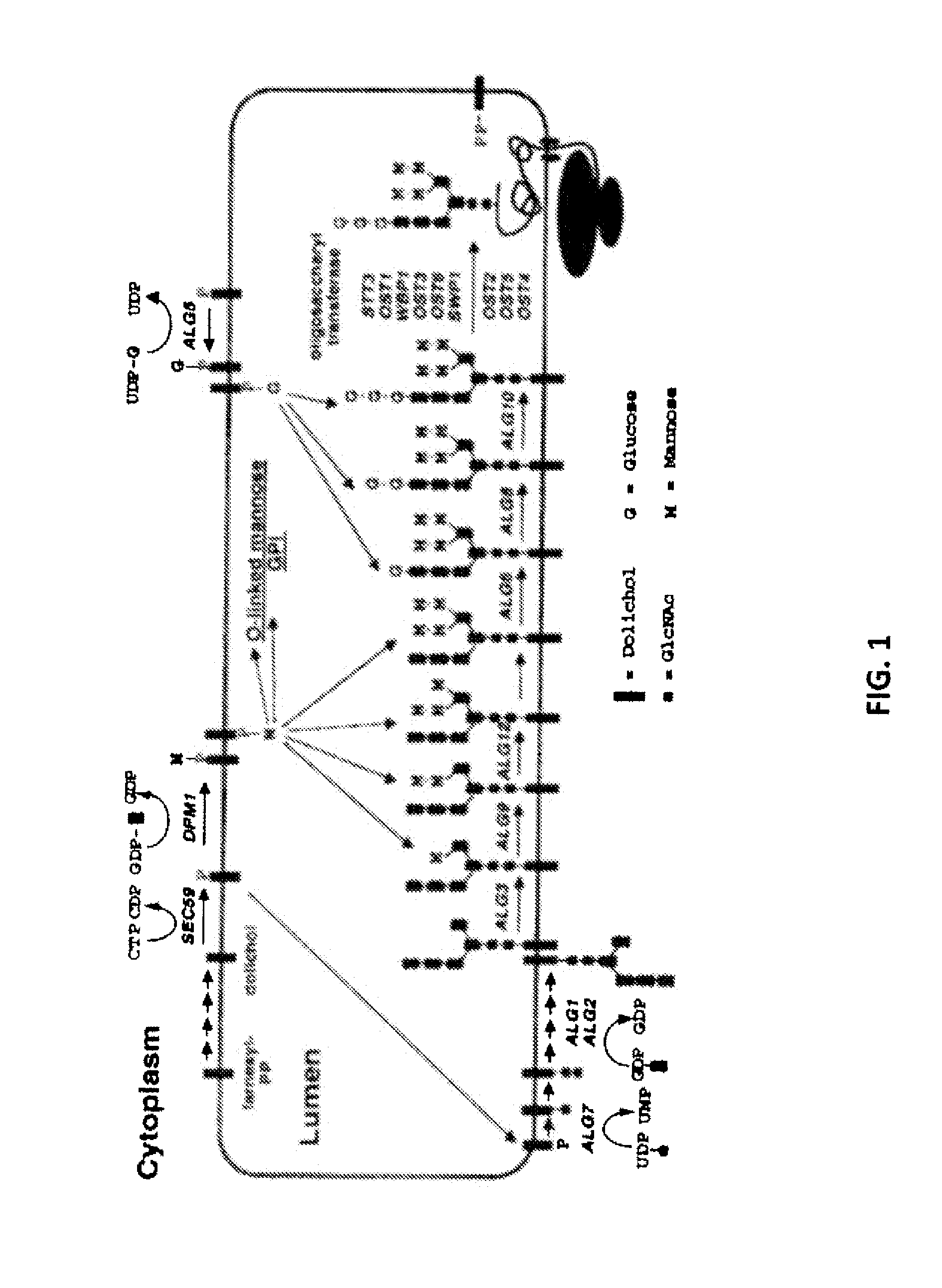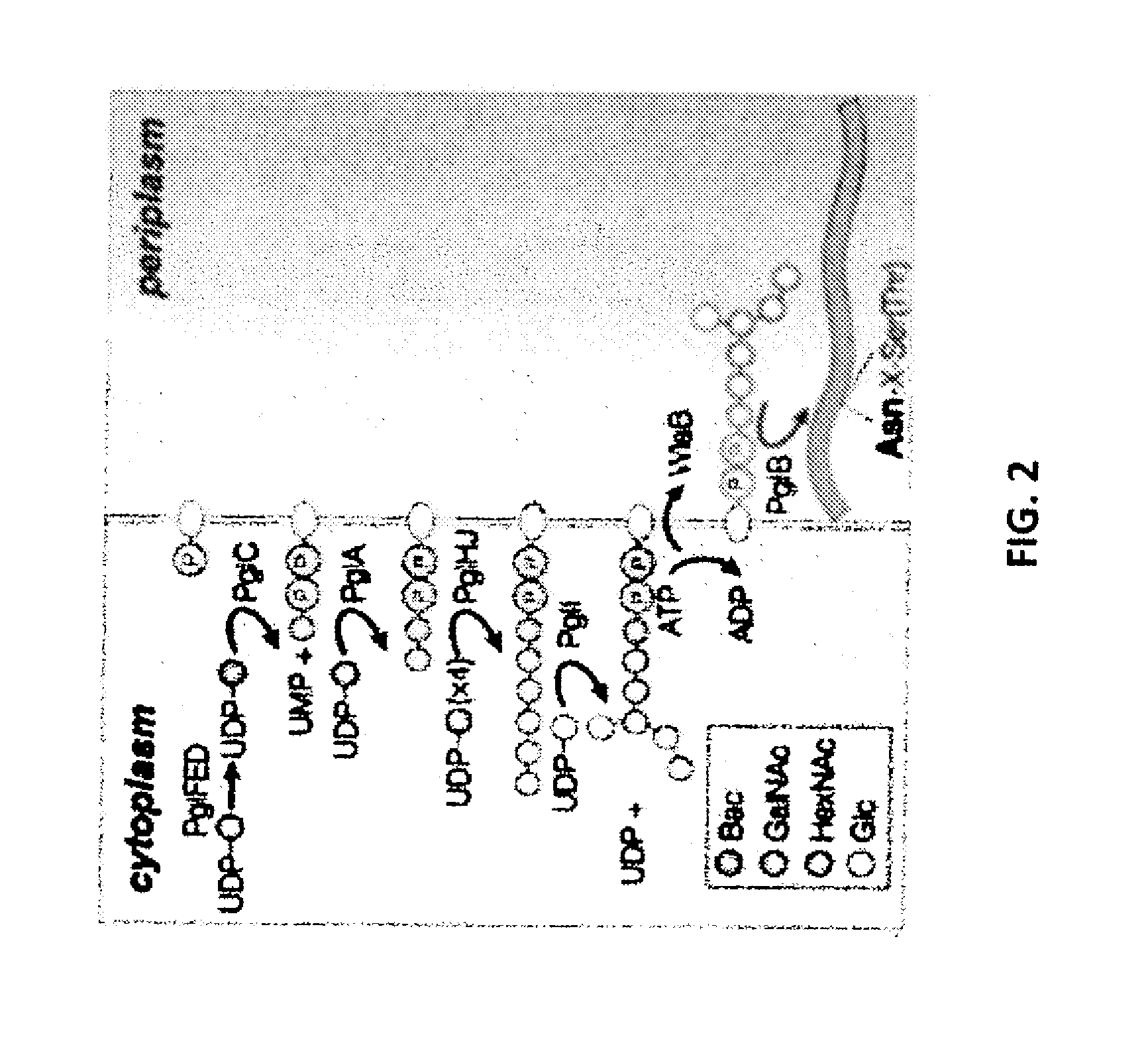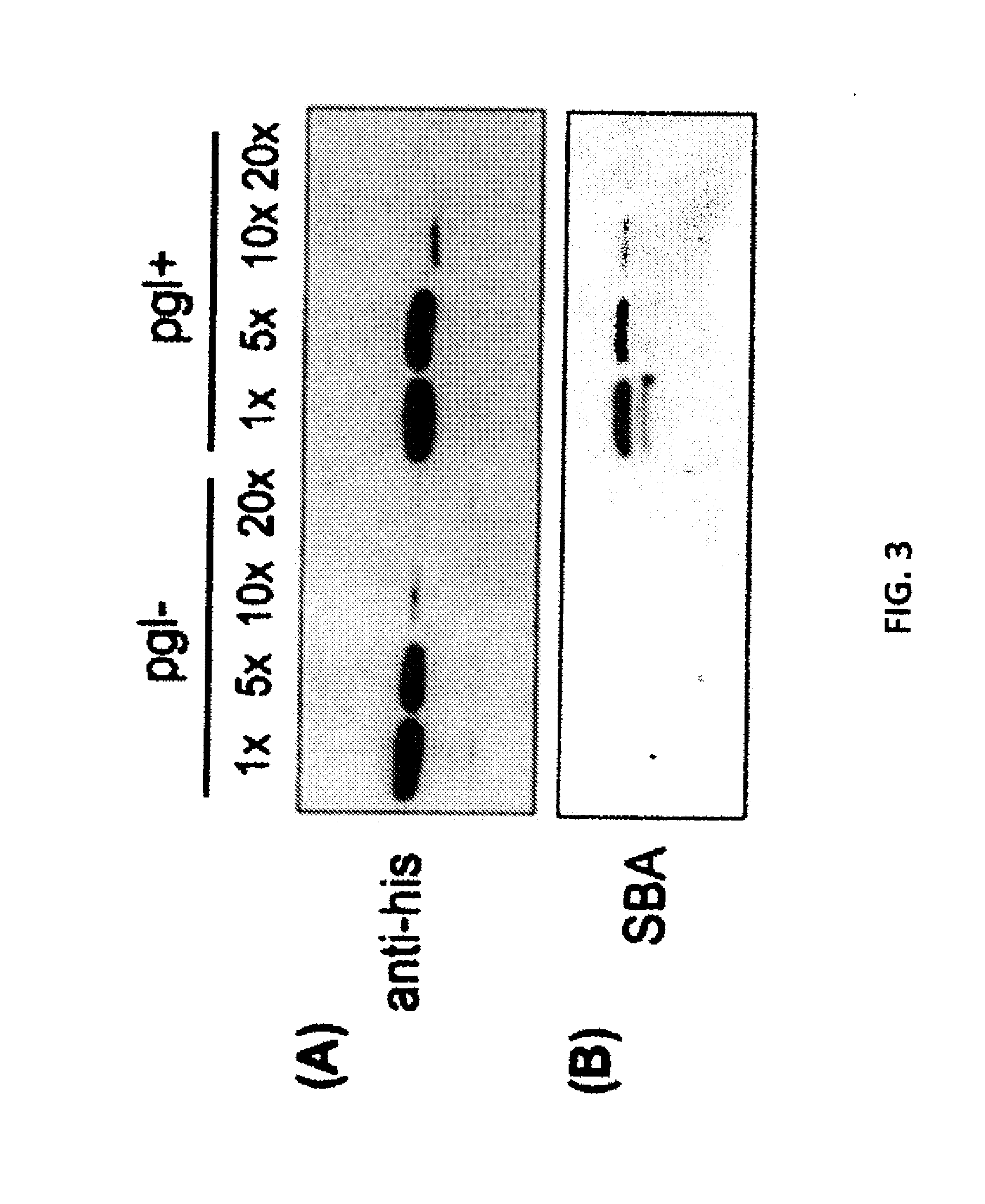Glycosylated protein expression in prokaryotes
a technology of glycosylated protein and prokaryotes, which is applied in the field of glycosylated protein expression in prokaryotes, can solve the problems of low volumetric productivity of eukaryotic hosts such as cho cells, high manufacturing costs, and poor quality of mammalian cell culture, and achieves rapid cloning, reduced cost and time, and large volume of data
- Summary
- Abstract
- Description
- Claims
- Application Information
AI Technical Summary
Benefits of technology
Problems solved by technology
Method used
Image
Examples
example 1
N-Linked Protein Glycosylation in Genetically Modified E. coli
[0100]The experiments of Wacker et al. are reproduced here, where the C. jejuni pgl genetic locus was functionally transferred to E. coli, conferring on these cells the ability to perform N-linked protein glycosylation (Wacker et al., “N-linked Glycosylation in Campylobacter jejuni and its Functional Transfer into E. coli,” Science 298:1790-3 (2002), which is hereby incorporated by reference in its entirety). For these studies, the plasmid pACYC184-pgl (pgl+) and a control plasmid derived from pACYC184-pgl that carried an insertion mutation in the pglB gene encoding the essential OST (pACYC184-pglB::kan; pgl−) were employed. BL21(DE3) E. coli cells were co-transformed with either a pgl+ or pgl− vector along with a second vector encoding the C. jejuni glycoprotein PEB3. His-tagged PEB3 was expressed in the periplasm in pgl+ and pgl− cells and purified from the periplasmic fraction using nickel affinity chromatography; Ni-...
example 2
N-Linked Glycosylation of MBP with a Peptide Tag in Glyco-Engineered E. coli
[0101]E. coli maltose binding protein (MBP) was fused to a gene encoding four consecutive glycosylation sequons (GAT CAG AAC GCG ACC GGC GGT GAC CAA AAT GCC ACA GGT GGC GAT CAA AAC GCC ACC GGC GGT GAC CAG AAT GCG ACA) (SEQ ID NO: 13) in the SacI and HindIII sites of pTRC99A [Amersham Biosciences]. The gene encodes a peptide tag of four consecutive DQNAT SEQ ID NO: 14 peptides separated by two glycine residues. DQNAT (SEQ ID NO: 14) sequons were efficiently glycosylated by PglB during in vitro experiments (Chen et al., “From Peptide to Protein: Comparative Analysis of the Substrate Specificity of N-linked Glycosylation in C. jejuni,” Biochemistry 46:5579-85 (2007), which is hereby incorporated by reference in its entirety). Such a tag fused to the C-terminus of MBP, also appended with a C-terminal 6×His tag for purification, was expressed in BL21(DE3) E. coli transformed with pACYC-pgl and pACYC-pglmut (PglB...
example 3
IgG M18.1 Glycosylation in E. coli
[0103]This example describes glycosylation of complex human glycoproteins in the periplasm of glyco-engineered E. coli. Specifically, a full-length human immunoglobulin (IgG M18.1) against anthrax toxin was expressed in pMAZ360 M18.1 (Mazor et al., “Isolation of Engineered, Full-length Antibodies from Libraries Expressed in Escherichia coli,” Nat Biotechnol 25:563-5 (2007), which is hereby incorporated by reference in its entirety)) was mutated via site-directed mutagenesis (Quik Change Kit, Qiagen) such that the glutamine residue at residue 295 in the IgG heavy chain (CH2) was mutated to aspartic acid to introduce the bacterial glycosylation motif D-X1-N-X2-S / T (FIG. 5A) using primers (5′-gacaaagccgcgggaggaggattacaacagcacgtaccgtg-3′ and 5′-cacggtacgtgctgttgtaatcctcctcccgcggctttgtc-3′) (SEQ ID NO:15 AND SEQ ID NO: 18, respectively). Following expression in the periplasm of BL21(DE3) E. coli transformed with pACYC-pgl or pACYC-pglmut (PglB W458A, D4...
PUM
| Property | Measurement | Unit |
|---|---|---|
| Tm | aaaaa | aaaaa |
| temperatures | aaaaa | aaaaa |
| molecular mass | aaaaa | aaaaa |
Abstract
Description
Claims
Application Information
 Login to View More
Login to View More - R&D
- Intellectual Property
- Life Sciences
- Materials
- Tech Scout
- Unparalleled Data Quality
- Higher Quality Content
- 60% Fewer Hallucinations
Browse by: Latest US Patents, China's latest patents, Technical Efficacy Thesaurus, Application Domain, Technology Topic, Popular Technical Reports.
© 2025 PatSnap. All rights reserved.Legal|Privacy policy|Modern Slavery Act Transparency Statement|Sitemap|About US| Contact US: help@patsnap.com



